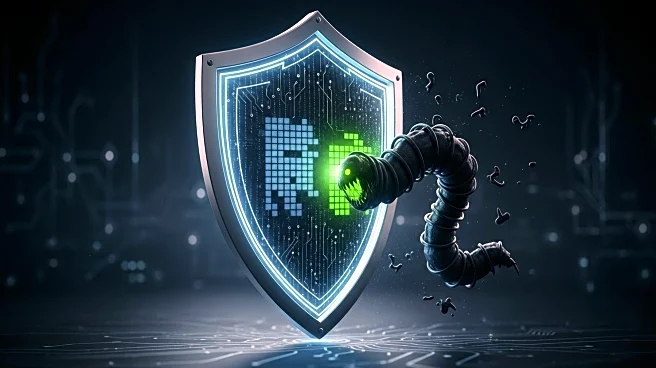What's Happening?
In September 2025, the JavaScript ecosystem faced a significant supply chain attack involving a self-replicating worm named 'Shai-Hulud.' This malware compromised over 477 npm packages, marking the first automated propagation campaign in the npm registry's history. The attack began with phishing operations targeting npm package maintainers, using fake domains to mimic the official npm registry. The attackers employed social engineering tactics to convince maintainers to update their multi-factor authentication credentials, exploiting the trust relationship between developers and the npm platform. The malware's core innovation lies in its self-replicating mechanism, allowing it to automatically infect additional packages maintained by compromised developers. This automated approach led to rapid growth in affected packages, spreading from a few initial compromises to over 477 within 72 hours.
Why It's Important?
The 'Shai-Hulud' attack represents a significant evolution in supply chain threats, combining social engineering with technical automation to achieve unprecedented scale and persistence. It highlights vulnerabilities in trust-based ecosystems and the inadequacy of traditional security measures against self-propagating threats. The attack's success underscores the need for fundamental changes in dependency management and package validation practices. Organizations must enhance maintainer account security to prevent cascading compromises across package ecosystems. The incident raises concerns about supply chain security in enterprise software development, particularly with the compromise of packages belonging to major cybersecurity vendors like CrowdStrike.
What's Next?
The npm ecosystem's recovery from the 'Shai-Hulud' attack provides a critical learning opportunity for improving supply chain security across software distribution platforms. Future security practices must evolve to address adaptive, self-propagating threats, combining automated detection, community collaboration, and enhanced maintainer security practices. The lessons learned from this incident should inform technical security improvements, policy changes, and organizational strategies to better defend against future supply chain attacks.
Beyond the Headlines
The 'Shai-Hulud' attack demonstrates the increasing weaponization of AI tools in cybercriminal operations, enhancing the quality and effectiveness of malicious code development. This trend poses ethical and security challenges, as AI tools become more accessible and sophisticated. The attack also raises questions about the balance between accessibility and security in open-source software distribution, prompting discussions on ecosystem security architecture.










